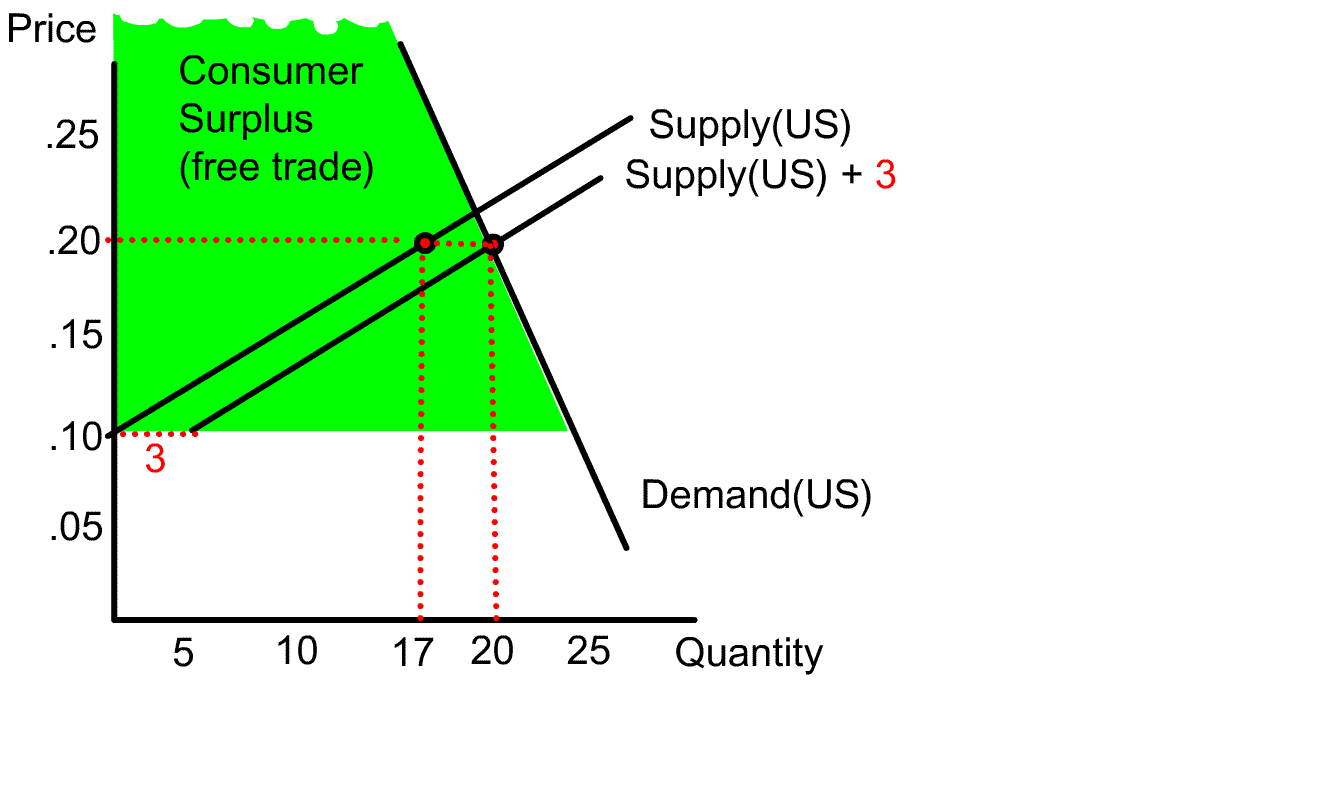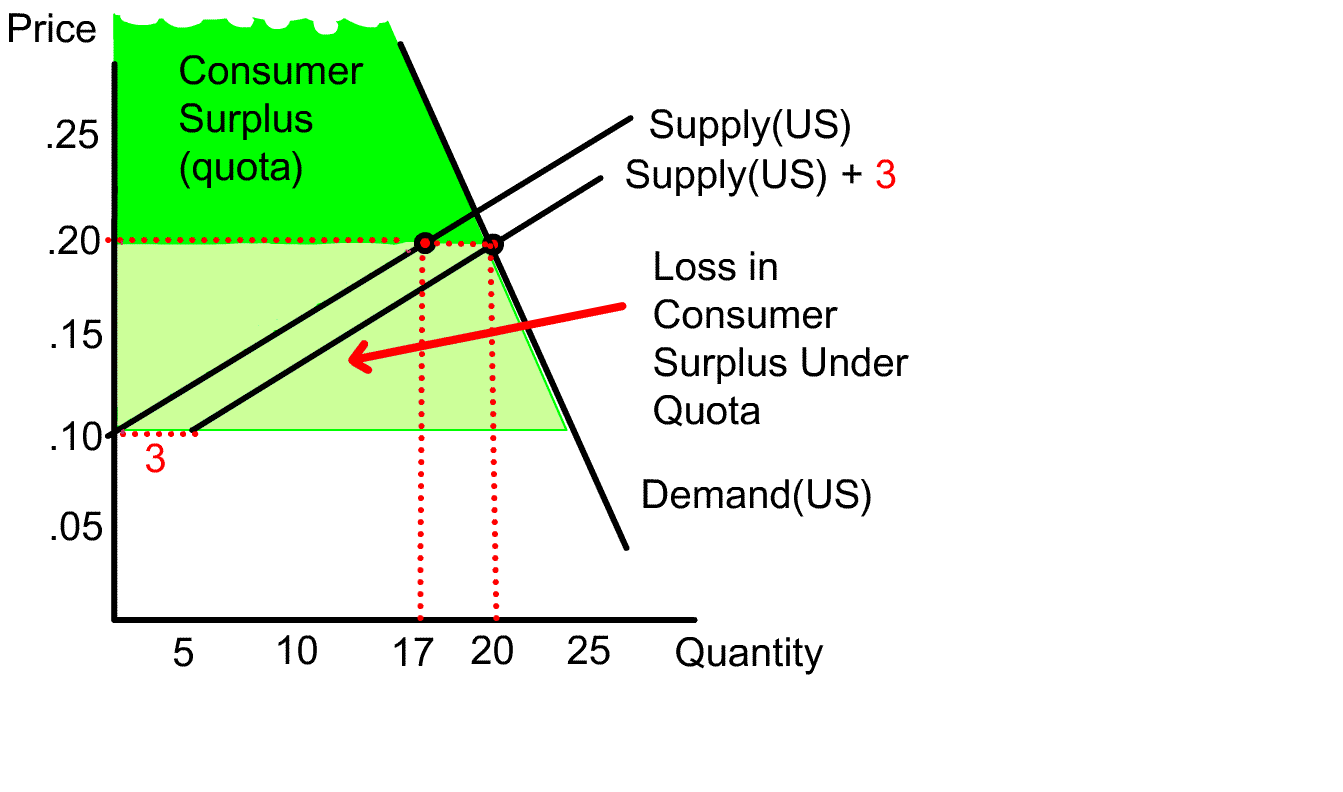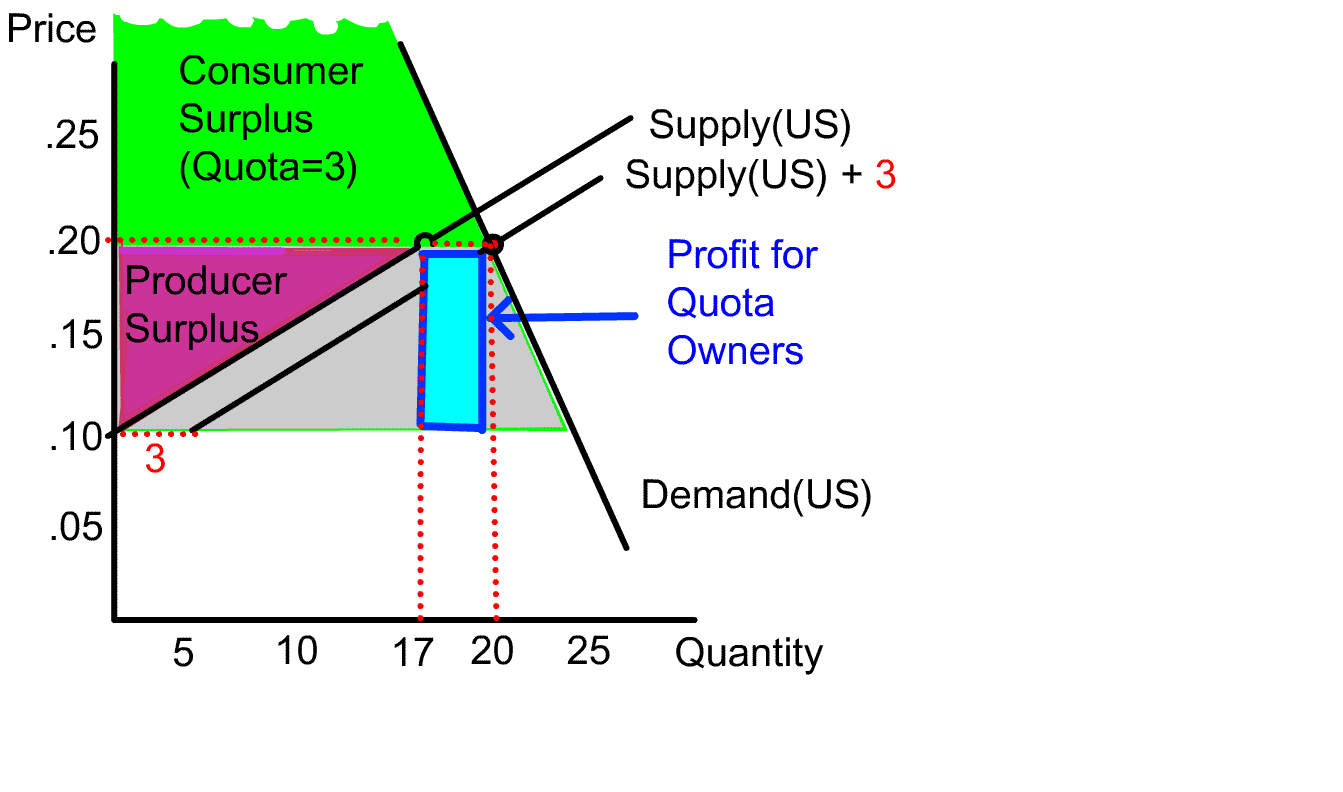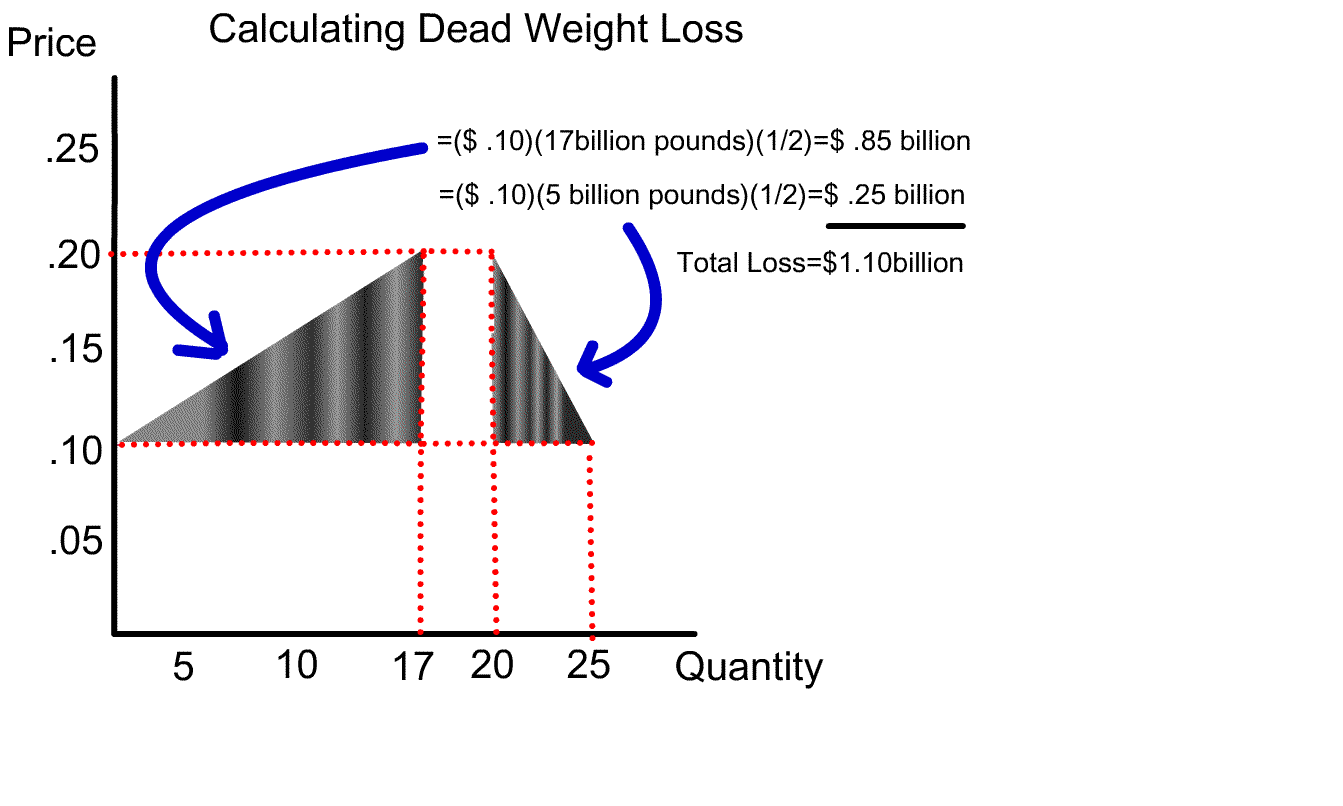This Black Friday, no retailer is gunning for your holiday shopping dollar more than Walmart, Amazon, and Target
Aside from Costco, which is less focused on gift-giving as it’s a buy-in-bulk warehouse operator, Walmart, Amazon and Target are the three biggest mass-merchandise retailers in the country, and all three see significant spikes in sales when the holidays arrive. Not surprisingly, these companies are extra competitive during the holiday season, when retailers need to make the most of the once-a-year crush of shoppers looking for deals.
Let’s take a look at how Walmart, Target, and Amazon are preparing for Black Friday this year.

Image source: Getty Images.
The shipping wars
E-commerce has taken center stage during the holiday season as Black Friday and Cyber Monday have essentially rolled into one long shopping weekend bonanza. Walmart, Amazon, and Target have all made efforts to reach more customers through e-commerce over the past year and during the holiday season as online shopping is a crucial component of the holidays for retailers.
Walmart has rapidly expanded programs like online grocery pickup and delivery, now offering pickup at more than 3,000 locations and delivery at more than 1,400. Though food doesn’t tend to be a focus of holiday shopping, those initiatives have helped Walmart build a digital relationship with customers, getting them to download its app and become used to ordering from the company online. Similarly, the company has rolled out Pickup Towers to at least 700 stores, making in-store pickup for most items easy.
The company has also stepped up its delivery capabilities. After offering free two-day delivery on orders with a $35 minimum without a membership fee starting in 2017, Walmart this year launched NextDay Delivery, bringing customers free next-day delivery on 220,000 items with a $35 order minimum. The company also announced Delivery Unlimited, which offers free grocery deliveries with a $98 annual fee.
Amazon continues to set the pace in e-commerce as the company earlier this year accelerated its two-day Prime shipping promise to one-day, an expensive move that will cost the company $1.5 billion in the fourth quarter. However, it’s sure to delight customers, especially those counting on last-minute gifts. Amazon continues to offer the widest selection of products online, and e-commerce is especially popular during the holidays when the weather is cold and shoppers can avoid the stress of the mall by shopping from home. With its voice-activated Alexa technology, Amazon continues to find new ways to make shopping more convenient, and its Prime membership program locks in shoppers and gives it a competitive advantage.

Christmas Shopping
Target, finally, has made dramatic improvements in its e-commerce and fulfillment strategies in recent years. Following its acquisition of Shipt, the company now offers same-day delivery, and it has a number of convenient pickup options, including Drive Up, allowing customers to conveniently drive up to their local store and get their order put in their car for them, or Order Pickup, a convenient pickup option inside the store. In the third quarter, CEO Brian Cornell said that 80% of the company’s digital sales growth came from same-day fulfillment initiatives, showing that those moves have been successful in fending off Amazon and gaining market share.

Target is also making a big push this holiday season, again offering free two-day shipping with no order minimum, adding 50 million payroll hours, and doubling the number of staff focusing on fulfillment so customers can get their orders even faster. Target is also adding 10,000 new and exclusive toys to its holiday selection in addition to thousands of gifts under $15 and new Disney shop-in-shops in 25 Target stores.
The price wars
Convenience isn’t everything. Price also counts for a lot on Black Friday. Here are some of the savings you’ll find online and in stores.
Walmart’s deals include:
- A 65-inch 4K Philips TV for $278.
- $50 off an Oculus Go Virtual Headset. Now $149.
- Up to $700 in eGift Cards with the purchase of a new Apple or Samsung smartphone.

At Amazon, shoppers can take advantage of:
- 33% off of 9-speed Elby Electric Bike. Now $1,999.99.
- Up to 45% off of Samsung QLED TVs.
- Tons of deals on Amazon products like Kindle e-readers and Echo devices.
Target’s specials include:
- $170 off on a Dyson AM09 Hot and Cool Fan. Now $279.99-$449.99.
- $100 off on a Playstation 4 Pro. Now $299.99.
- $220 off on a KitchenAid 5-quart Mixer. Now $229.99.
Shoppers looking to get the lowest price on a specific item should download a price-comparison app such as PriceBlink, which will help them get the most savings and alert them to any available coupons or discounts. It’s also worth remembering that Target and Walmart will both match competitor prices, though Walmart ended its Savings Catcher price-match tool earlier this year. Amazon, on the other hand, does not have a price-matching policy.
Who’s the winner?
Where you shop on Black Friday will likely be determined by your own preferences. If you prefer the selection and discovery of browsing in a store, you’ll choose Walmart and Target over Amazon. Target has particular strengths in private brands, apparel, toys, and home goods. Walmart, meanwhile, is best known for low prices on everyday products, but the retailer has pushed into higher-end items lately, like its recent launch of Hart power tools. If you’re looking to do some gift shopping while you pick up your groceries, Walmart is also probably your best bet.
Amazon, meanwhile, is the best place to go if you’re looking for Amazon-made items such as e-readers, tablets, connected TV devices, or smart speakers, and the tech giant is probably the best choice for those looking for the convenience of shopping from home, fast delivery, and easy online returns.
Though Walmart, Amazon, and Target are all competing with each other this holiday season, in the greater universe of retail, all three are likely to be winners. Their efforts to improve delivery speeds and offer more convenient pickup options are helping them to grab market share from struggling retailers such as department stores and mall-based chains.
It’s no surprise, then, that both Walmart and Target have seen strong comparable sales growth over the past several quarters, while Amazon continues put up sales growth in its home region in the 20% range, blowing away nearly every other retailer. Expect that pattern to continue this holiday season, no matter who emerges victorious from this Black Friday battle royale.



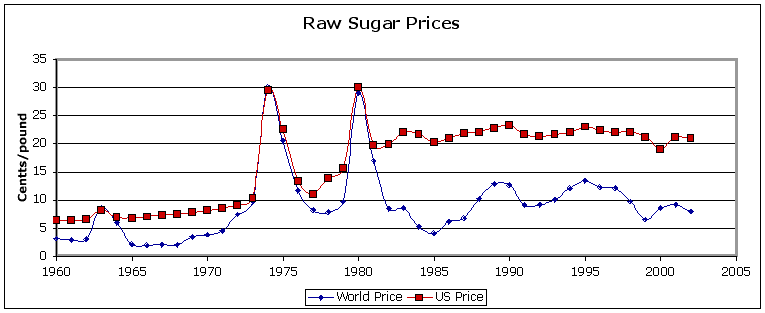 Quotas on US Sugar Imports: Under the sugar import quota system (which started in 1983?) imports of raw sugar are limited to about 3 billion pounds (about 15% of US consumption). Since 1995 the world price of sugar has shown a downward trend. Normally, if the world price falls relative to the US price, we would expect imports to increase. However, under the quota system, the quotas allocated to sugar importers decreased during this time. From the data, it seems as if imports are restricted to a level which keeps the US price above 20 cents per pound.
Quotas on US Sugar Imports: Under the sugar import quota system (which started in 1983?) imports of raw sugar are limited to about 3 billion pounds (about 15% of US consumption). Since 1995 the world price of sugar has shown a downward trend. Normally, if the world price falls relative to the US price, we would expect imports to increase. However, under the quota system, the quotas allocated to sugar importers decreased during this time. From the data, it seems as if imports are restricted to a level which keeps the US price above 20 cents per pound. 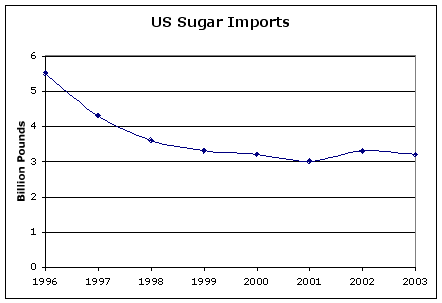
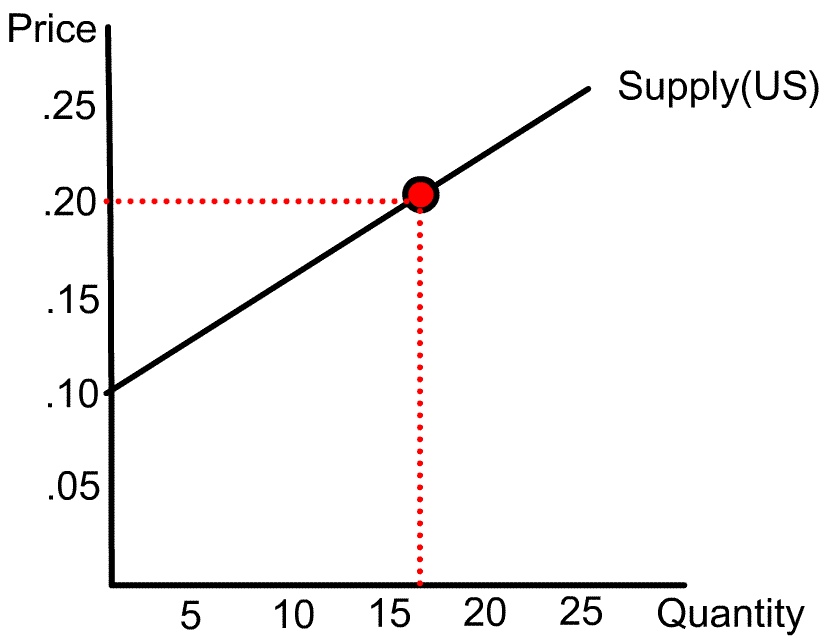
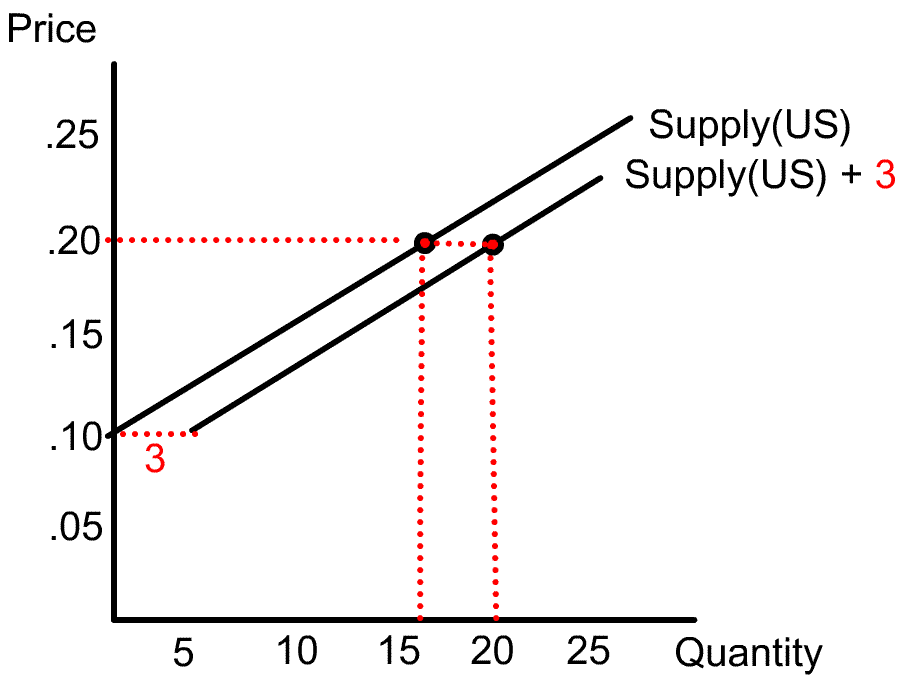 Step Two The sugar import quota system has operated to limit US imports of sugar to 3 billion pounds. So the total supply of sugar in the US market is the Supply(US) plus the 3 that can be imported. This is shown as “Supply(US) + 3” in the diagram to the right..
Step Two The sugar import quota system has operated to limit US imports of sugar to 3 billion pounds. So the total supply of sugar in the US market is the Supply(US) plus the 3 that can be imported. This is shown as “Supply(US) + 3” in the diagram to the right..  Step Three: We know that when the price in the US is 20 cents per pound US consumers buy about 20 billion pounds, so the US demand curve goes through the point P=.20 and Q=20. This is done in the diagram to the right. Step Four: Putting the supply and demand together we can see how the import quota is set at 3 so that 20 cents is the market equilibrium price in the US .
Step Three: We know that when the price in the US is 20 cents per pound US consumers buy about 20 billion pounds, so the US demand curve goes through the point P=.20 and Q=20. This is done in the diagram to the right. Step Four: Putting the supply and demand together we can see how the import quota is set at 3 so that 20 cents is the market equilibrium price in the US . 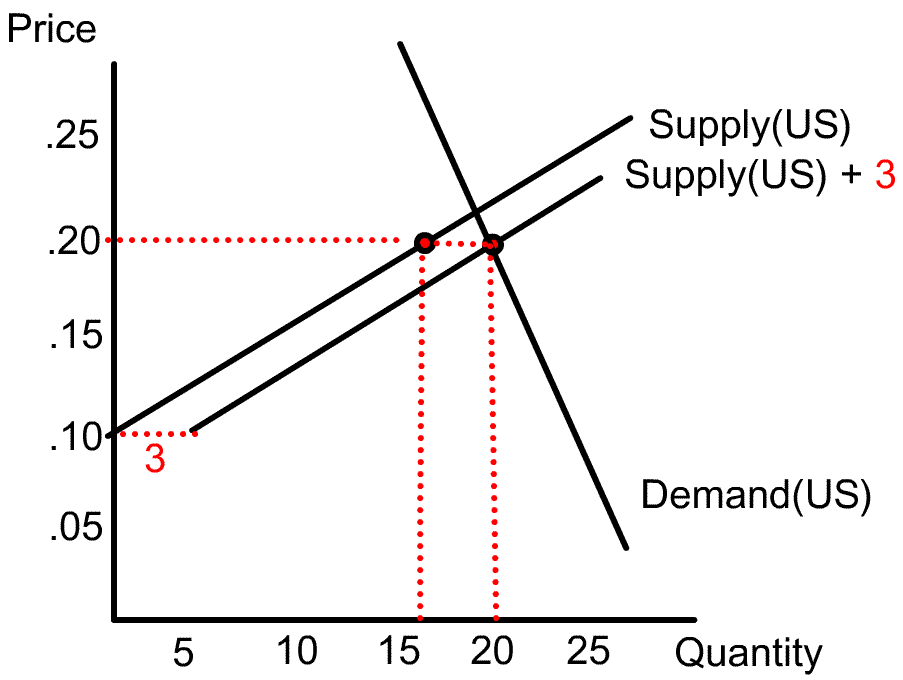 Calculating the magnitude of the efficiency loss caused by the sugar import program:Economists argue that trade is benficial to both buyers and sellers. From this it follows that restricitions on trade, like the sugar import program, will cause some loss in efficiency. Now it may be that, as a country, we are willing to incur some efficiency loss in order to pursue some other objective like preserving agricultural lifestyles. Many developed countries restrict trade in agricultural products to protect their domestic farmers. The Japanese restrict rice imports and the Norwegians restrict dairy product imports. The US restricts sugar imports. One job for economists is to calculate the costs of such programs so that more informed decisions can be made about whether it is too costly to have programs like the sugar import quota program. If the cost to the US is only $1 million per year, maybe the program is a cheap way to protect farmers and maintain a vibrant ag community. But if the cost is $100 billion, maybe not.
Calculating the magnitude of the efficiency loss caused by the sugar import program:Economists argue that trade is benficial to both buyers and sellers. From this it follows that restricitions on trade, like the sugar import program, will cause some loss in efficiency. Now it may be that, as a country, we are willing to incur some efficiency loss in order to pursue some other objective like preserving agricultural lifestyles. Many developed countries restrict trade in agricultural products to protect their domestic farmers. The Japanese restrict rice imports and the Norwegians restrict dairy product imports. The US restricts sugar imports. One job for economists is to calculate the costs of such programs so that more informed decisions can be made about whether it is too costly to have programs like the sugar import quota program. If the cost to the US is only $1 million per year, maybe the program is a cheap way to protect farmers and maintain a vibrant ag community. But if the cost is $100 billion, maybe not. 